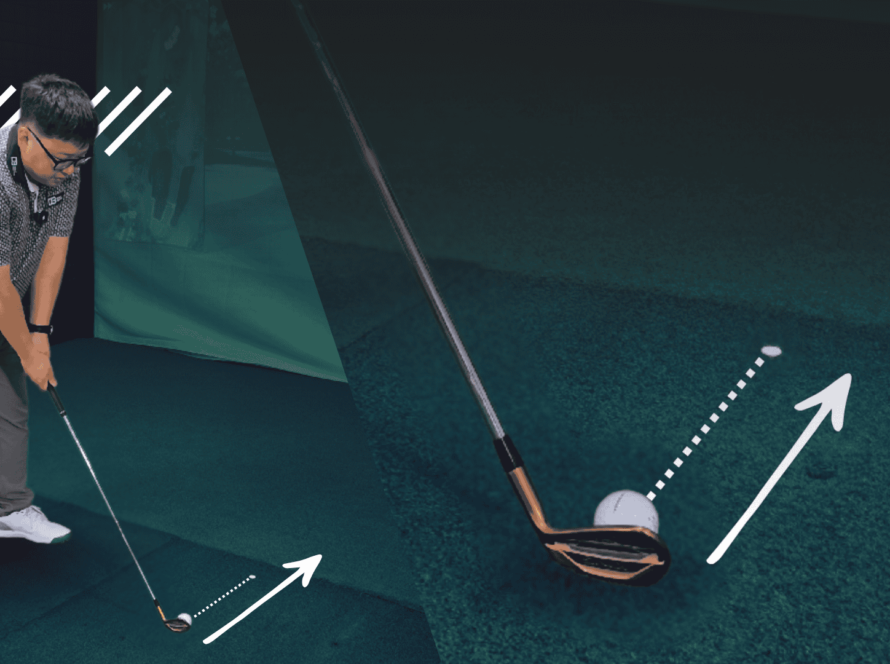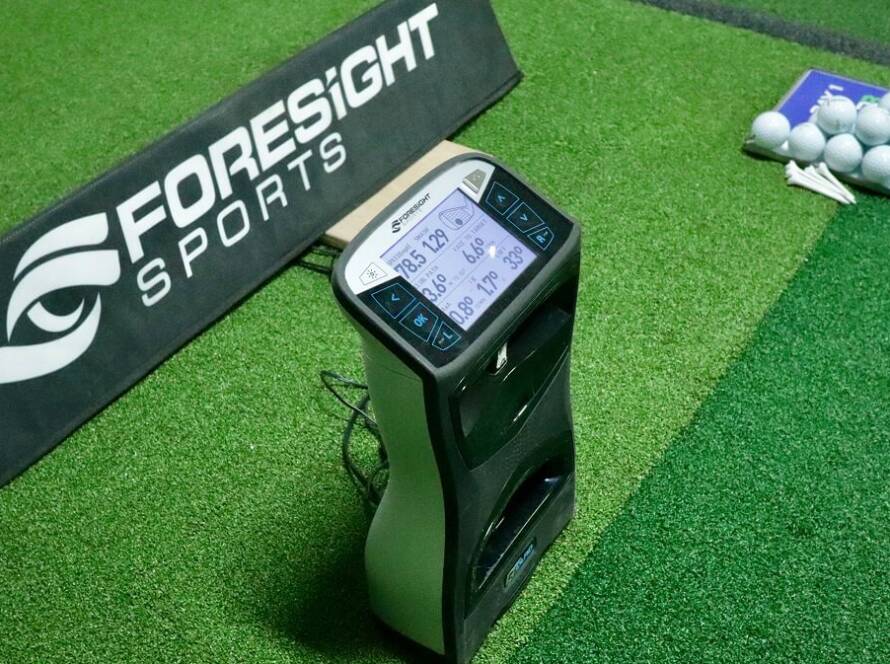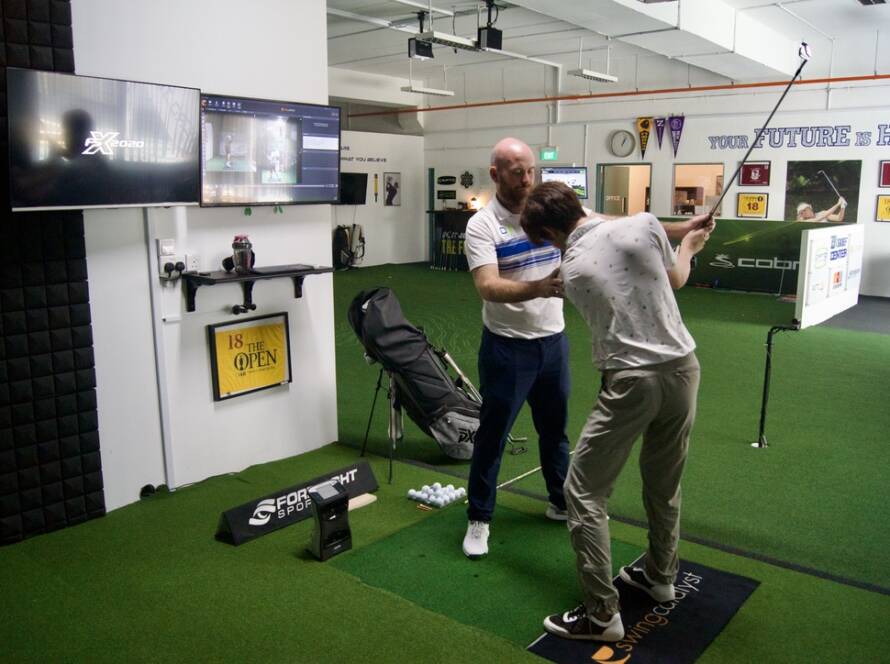What is Ball Data and How is it Used in Golf Coaching?
In modern golf, ball data refers to the detailed measurements of a golf ball’s behavior immediately after impact with the clubface. Using advanced launch monitors such as the Foresight GCQuad, GC3, and integrated systems like Swing Catalyst, ball data provides precise insights into how fast, how high, and how far the ball travels.
The ball data focuses purely on the outcome of the shot. It tells golfers not just what the ball did but also why it behaved that way.
So the Ball Date number are used to:
- Analyze performance in real time
- Fit equipment
- Track improvements over time
Important Metrics of Ball Data
Modern systems like GCQuad measure many variables, but these are the key ball data metrics every golfer should understand which is used both indoor golf bays and outdoor driving range:
1. Ball Speed
The ball speed is the velocity of the ball as it leaves the clubface, and it is the key indicator of swing efficiency. The ball speed is measured in the launch monitors considering the factor like club speed and the smash factor. Monitoring ball speed helps golfers improve distance and track swing consistency, making it essential for simple practice to tour level performance analysis
2. Launch Angle
The launch angle is the initial vertical angle at which the ball takes off after impact. It is influenced by factors such as club loft, angle of attack, swing speed, and even the ball’s design. Optimizing launch angle is critical for maximizing carry distance and improving accuracy. An optimized launch helps golfers hit the ball over obstacles, skip water source and bunkers, and ultimately lower scores.
3. Spin Rate:
Spin rate refers to how fast the golf ball rotates immediately after impact and it is usually Measured in RPM (revolutions per minute), spin rate controls lift and stopping power. This parameter is critical for distance with drivers and accuracy with wedges.
4. Spin Axis / Side Spin:
Spin axis is the tilt of the ball’s spin, which decides if the shot curves left or right. If it tilts right, the ball curves right (fade or slice). If it tilts left, the ball curves left (draw or hook). Side spin is just another way to describe this curve. Launch monitors often show it as numbers to indicate direction. Knowing spin axis/side spin helps golfers fix slices and hooks, control shot shape and hit straighter shots. Pros usually keep it close to neutral, while beginners often see bigger curves.
5. Carry Distance:
Carry distance is the length the ball travels in the air before hitting the ground. It is measured by launch monitors using radar or camera tracking of the ball’s flight. Understanding carry distance helps golfers select the right club, clear hazards, and plan shots more accurately
6. Total Distance:
Total distance is the sum of carry distance plus roll after landing. It is measured by launch monitors tracking the ball from impact to final resting place. Understanding total distance helps golfers estimate how far the ball actually travels, especially with drivers and long clubs
7. Peak Height / Apex:
Peak height is the highest point the ball reaches in its flight. Launch monitors measure it by tracking the ball’s trajectory from impact to apex. Knowing peak height helps golfers control shot trajectory, improve stopping power on greens, and manage shots in windy conditions.
8. Dispersion
Dispersion is the measure of how far your shots spread left or right from the target line. Launch monitors track the lateral deviation of each shot from the intended target. Understanding dispersion helps golfers identify consistency issues, correct alignment and swing path, and improve accuracy on the course. For pros, dispersion is usually very close to the target, while for beginners, shots tend to be more spread out, highlighting areas that need improvement.
How This Helps Beginners and Pros :
Ball data is not just for elite players it benefits golfers at every level.
Ball Data for Beginners:
- Gives instant feedback on why shots curve or fly too high.
- Helps you learn faster with clear numbers instead of vague tips.
- Ensures you use the right clubs and balls for more forgiving play.
Ball Data for Pros:
- Lets pros fine-tune every detail of spin, launch, and distance.
- Guides course strategy by knowing exact carry numbers to avoid hazards.
- Helps train under tournament like conditions .
How to Effectively Use Ball Data to Improve Our Game
Simply looking at numbers isn’t enough. To truly benefit, golfers should learn to apply ball data in practice and play.
1. Identify the Weakest Metric
Instead of chasing every number, start with the one most holding you back.
- Low ball speed: Improve strike quality.
- Excessive spin: Adjust equipment or swing path.
- Poor dispersion: Focus on alignment and face control.
2. Work with a Coach
Launch monitors like GCQuad paired with Swing Catalyst help coaches link movement with ball outcomes. Guided with the Golf coaches from reputed Golf coaching center, the ball data is clearly utilized.
3. Use Ball Data for Equipment Fitting
Things like the angle of the driver (loft), how flexible the shaft is (shaft flex), or even the type of golf ball can completely change how the ball spins and launches.
That’s why it’s important to test your gear using a launch monitor instead of just guessing what works best for you.
4. Set Measurable Goals
Keep track of your progress using real numbers. This helps you see what’s working and stay motivated. Focus on things like hitting the ball faster or reducing spin to get more distance.
5. Simulate On-Course Conditions
Indoor golf bay setups let you test different wind conditions, fairway firmness, and course layouts. Practicing with specific ball data targets prepares you for real play.
Ball data is no longer a luxury reserved for tour professionals, it’s an essential tool for any golfer serious about improvement. By understanding metrics like ball speed, launch angle, spin rate, and carry distance, both beginners and pros can:
- Diagnose problems quickly
- Train smarter, not harder
- Optimize equipment for maximum performance
- Build consistency and confidence under pressure



